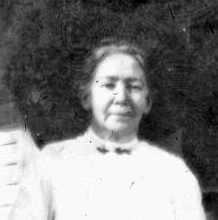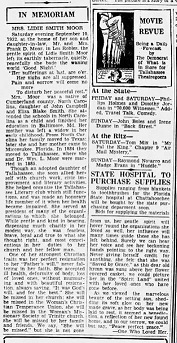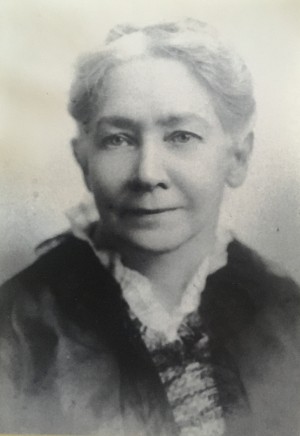It is no secret that the voices, experiences, and identities of women in history have been considerably obscured through time. Coverture, a legal concept, was likely introduced into Europe around the 11th Century and persisted well into the 19th century. It stipulated that upon marriage a woman’s legal identity was to be absorbed by her husband’s, making her invisible in the eyes of the law. Consequently, under English common law, women’s rights to own property, enter contracts, or participate in other legal matters were often restricted or non-existent. A customary practice of Western culture at the time, coverture was naturally later adopted by the United States. Traditional archival practices can still reflect these patriarchally biased customs, perpetuating erasure by omitting the names of women, their achievements, and ultimately their identities.
Women in older archival documentation are consequently referred to solely by their marital status or husband’s name, Mrs. Husband’s Name (example in collection). One of my tasks this past year as the Conscious Editing Assistant has been reviewing and identifying missing or incomplete names of women within our own collections and archives. The goal being able to hopefully provide these women with their own identities and give them back the autonomy they rightfully deserve.
For instance, the first woman whose name I successfully remediated appeared early on in my research in the Tallahassee Literary Club Records Collection. Little information was provided as to who she might be, but her role in the collection was established as one of the founding members. It was in her home in 1899 where the first Tallahassee Literary club meeting ever took place. She is named in the finding aid solely as “Mrs. W.L. Moor”, derived from her own signature found in one of the journals which meticulously recorded the meeting minutes of September 8th, 1899 (Finding Aid).
With only this, I set off trying to find any additional information I could.

Without the full first name of her husband, my first attempts resulted in very little. Coincidentally, looking through another collection, the Frank Douglas Moor Collection (also housed here at FSU), I was able to find the possible identity of her husband, Dr. William Louis Moor. Using this name in combination with the name of his known son Frank Douglas Moor I turned to free online resources like Ancestry.com, findagrave.com, and clippings of obituaries, deaths and marriage announcements in digital newspapers.

I struck what I thought was gold when I located the gravesite information of our Dr. William Louis Moor and confirmed Frank D. Moor as one of his children, both having documented ties to Tallahassee. I then realized that he had been married multiple times (one step forward and two steps back they say!) and that both women, due to naming conventions at the time, would have been addressed as our “Mrs. W.L. Moor.” I was, however, able to discern that one of the women had passed away before the year 1899. Zoning in on my other possible match, I now had to somehow prove she was indeed the same woman who helped in founding our literary club. I clicked on her profile on findagrave.com and was surprised to find an old black and white picture (above), a death certificate, and a couple of very promising news clippings (right).
On the edge of giving up, but knowing I was so close, I turned back to the collection one more time. I stumbled upon a folder containing a few random photographs labeled “Photographs of former club Members, 1926 and undated.” Ecstatically, I read the scope note “Mrs. William L. Moor (Close up).” With my fingers crossed I pulled the folder from its collection and in it found the final piece of proof I needed (pictured below).
A picture of our erased woman, one of the founding members of the Tallahassee Literary Club, Eliza Blake “Lidie” Smith Moor. It was safe to say I had found the name of the woman I had been looking for!

Photographs of former club Members, 1926 and undated.
While this example is one of success, it’s important to point out that the remediation of the names belonging to women of color is increasingly more difficult. Intersectional issues like racism, sexism, and socio-economic disparity create complications for remediation. Women of color, notoriously underrepresented in historical documentation, are often poorly recorded or completely left out of archival description. Therefore, the focus of remediation turns to the critical or “Conscious” analyzation of the descriptive information itself. The intention, recognizing the possible erasure of marginalized women’s voices, attempting to amplify their perspectives where possible, and adding contextualizing information where not possible.
Ultimately, aware of the obstacles, the Conscious remediation of women’s names in archival description looks to uncover not only the names of women impacted by erasure, but also to shed light on their no less important, yet forgotten, perspectives and experiences.